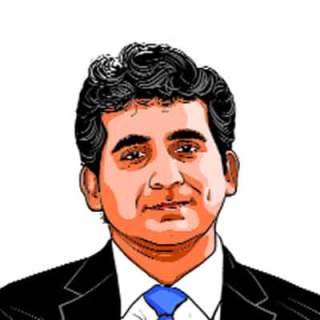There is no space for an inadvertent confluence of fiscal, regulatory, monetary easing
Policymakers have done well in the last few years to ensure macroeconomic stability. They must not now give in to the clamour for fiscal, monetary and regulatory easing.

The economic narrative in India has rapidly evolved. As recently as October, the policy was focused squarely on preserving macroeconomic stability as external imbalances rose to unsustainable levels and the rupee came under relentless pressure. With global crude prices collapsing since then and domestic food prices remaining exceptionally benign, stability concerns have receded.
Instead, rising agrarian distress and the (chronic) headwinds confronting small and medium enterprises (SMEs) have taken center stage. Extrapolating from this, some are fearing a more generalised and sustained slowdown. This has inevitably led to calls for some easing — fiscal, monetary, regulatory. The agrarian distress has already resulted in 10 states announcing farm loan waivers over the last two years. Now, there is a growing clamour among commentators to introduce unconditional cash transfers to serve as income support for distressed farmers nationally, as has been attempted in Telangana and Odisha. Separately, with food inflation dramatically undershooting and pulling down headline inflation with it, markets are expecting imminent rate cuts. Finally, banks continue to argue for some regulatory easing and forbearance. In other words, 2019 could witness an inadvertent confluence of fiscal, monetary and regulatory easing.
This would be a very dangerous path to tread, in our view. First, fears of a growth slowdown are overstated. Near-term prospects have meaningfully improved, as crude prices have collapsed, monetary conditions have eased, and banks have quickly stepped in to fill any void left by non-bank-financial-companies (NBFCs). Crude at $60 in the coming months versus $75-80 in the first half of the fiscal, will amount to a meaningful positive terms-of-trade impulse that boosts household purchasing power, increases farm margins and creates some fiscal space.
Second, bond yields have fallen by almost 70 bps from their highs and, even accounting for some increase in NBFC spreads, monetary conditions have eased to a two-year low. Third, non-food bank credit growth has picked up sharply, accelerating to a four-year high of 14 per cent, suggesting banks are quickly and increasingly stepping in to fill some of the NBFC voids. Finally, while the collapse in food prices hurts farmers’ purchasing power and rural consumption, it helps urban consumption. Yes, year-on-year growth in the second half of 2018-19 will moderate sharply — but largely optically on account of adverse base effects from the sharp growth at the end of last year — and, therefore, should be looked through.






































No hay comentarios:
Publicar un comentario